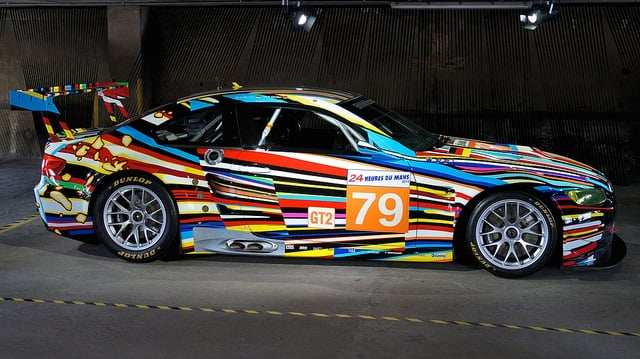Art & Exhibitions
How Much Are the Koons, Calder, and Warhol Art Cars Worth?


Eileen Kinsella

Bloomberg has a lengthy report about the history of, and market (more like “non-market”) for sport and luxury cars painted by famous artists ranging from Alexander Calder and Frank Stella to David Hockney, Robert Rauschenberg, and Andy Warhol. And because it is not possible to have a story about the intersection of art and commerce without the reigning king of crass self-promotion, the story includes commentary from Jeff Koons, who used studio assistants to help paint a BMW (above) in 2010. He apparently views the car as representing “the dichotomy between ‘understanding boundaries’ and ‘exploring extremes.'” Whatever you say, Jeff.
The report, titled “Art Cars: The Good, The Bad and the Ugly (and, of Course, Jeff Koons)” and written by Hannah Elliott, does a good job of explaining the difficulty in pricing these cars “especially when they’re hardly functional,” as in the case of the most extreme example, a BMW that Olafur Eliasson covered in ice in 2007 and which can only be displayed in a refrigerated showroom.
The piece has some interesting history, including tracing the roots of art cars to celebrities like John Lennon, who owned a yellow paisley 1965 Rolls-Royce Phantom V, and Janis Joplin, who owned a 1965 Porsche that a friend swathed in a “psychedelic” pattern. And the trend gathered serious momentum in 1975 when Alexander Calder remade a BMW for French race car drivers Hervé Poulain and Jochen Neerpasch that later became a popular draw at the 24 Hours of Le Mans race.
The main takeaway however, is that the value of these one of a kind pieces, which sometimes fall under the label of “functional sculpture,” comes down mostly to “personal taste and public acclaim,” as well as the novelty factor. As the report says, “a painted car is worth only exactly as much as someone is willing to pay for it, whether that’s $500 or $500,000. It’s an artwork on a (very) non-standard canvas.”
Our favorite part is the commentary from specialist insurer McKeel Hagerty, who tells Bloomberg: “It can be a real challenge from an aesthetic and valuation standpoint when you have to say ‘Wow, this is a great car, but the art is really not that great-looking’…Some of them are hideous.”